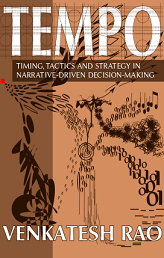Occasionally, we all find ourselves attracted to what we might think of as poison-pilled terms (by analogy to poison-pill clauses in contracts or pieces of legislation). Terms that point to interesting and useful ideas but fatally compromised by a) political baggage, b) unsound analytical provenance, or c) plain distastefulness of associations.
Subjectively, a poison-pilled term feels like the right term for a thing, coined in the wrong place, by the wrong person, for the wrong reasons. Where wrongness is of course relative to a presumption of our own rightness.
Assuming we are not sufficiently persuaded by the power of the term to change sides on the underlying issue, or operating definitions of rightness/wrongness (that would be a powerful term indeed), we are then faced with a poison-depilling problem.
[Read more…]










